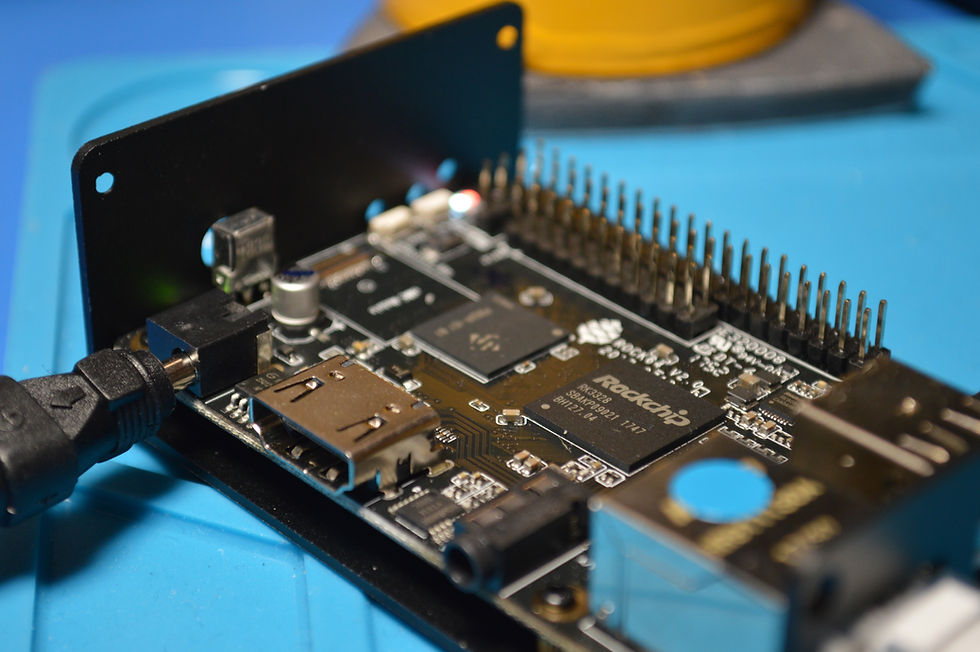
Introduction
WebRTC has become a cornerstone for real-time communication in web applications, enabling seamless audio, video, and data streaming directly in the browser. However, when it comes to IoT and embedded devices, leveraging WebRTC in a browser may not be the most efficient option. This is where compiling LibWebRTC natively for ARM devices comes into play. By doing so, developers can create highly optimized applications that significantly reduce CPU usage, resulting in lower power consumption and improved performance—key factors for IoT and embedded systems.
When you compile LibWebRTC for ARM, especially in the context of IoT and embedded devices, you unlock the potential to run real-time communication applications natively on ARM processors. This approach offers several advantages over using WebRTC within a browser, such as reduced latency, better resource management, and enhanced performance. The result is a more stable and reliable communication experience, which is crucial for applications in resource-constrained environments like smart homes, industrial IoT, and other embedded systems.
WebRTC for Embedded: Steps to Compile LibWebRTC for ARM
Compiling LibWebRTC for ARM, particularly for IoT and embedded devices, requires a few detailed steps. The following guide will help you through the process:
1. Set Up the Build Environment
Start by preparing an Ubuntu environment, either directly on an ARM device or on an x86 machine if you plan to cross-compile for ARM. Ensure that all necessary dependencies, such as Python, Git, and the build-essential package, are installed.
sudo apt-get update
sudo apt-get install build-essential python git2. Fetch the LibWebRTC Source Code
Clone the depot tools repository, which is essential for managing the source code of LibWebRTC.
git clone https://chromium.googlesource.com/chromium/tools/depot_tools.git
export PATH="$PATH:/path_to_depot_tools"Fetch the LibWebRTC source code using the following commands:
fetch --nohooks webrtc
cd src
gclient sync3. Explore Available GN Build Options
Before generating the GN build files, it’s beneficial to review all available build options. This step ensures that you configure your build optimally for your IoT or embedded ARM device.
gn args out/Default --listThis command lists all configurable GN build options, allowing you to tailor the build process to your specific needs.
4. Set Up GN Configuration
Generate GN build files tailored to the target architecture, either ARM32 or ARM64.
For ARM32:
gn gen out/arm32 --args='target_os="linux" target_cpu="arm" is_debug=false is_clang=true use_custom_libcxx=false'For ARM64:
gn gen out/arm64 --args='target_os="linux" target_cpu="arm64" is_debug=false is_clang=true use_custom_libcxx=false'Selecting the correct target_cpu (either arm for ARM32 or arm64 for ARM64) is crucial for optimizing the build for your IoT or embedded device.
5. Compile the Code
Once the GN configuration is set, you can proceed to compile the code using Ninja.
For ARM32:
ninja -C out/arm32For ARM64:
ninja -C out/arm64The compilation process may take some time, depending on your system’s hardware capabilities.
6. Deploy and Test
After successfully compiling LibWebRTC for ARM, deploy the binaries to your target IoT or embedded device. Comprehensive testing is essential to ensure that all functionalities are working correctly and that the performance benefits specific to your device are realized.
Note:
While compiling for ARM devices, one should use this option is_clang=truewhich is required to compile the neon flags available in the ARM architecture for video rendering acceleration. The default GCC in the Ubuntu-based Linux systems is not capable of compiling these flags and complains about neon flags. Therefore, it is advisable to use the clang already provided by the LibWebRTC to compile it rather than using the system's default C++ compiler which is GCC.
Summary
Compiling LibWebRTC for ARM devices, particularly in the context of IoT and embedded systems, offers significant advantages over using browser-based WebRTC. Native compilation allows you to fine-tune applications to run efficiently on ARM processors, resulting in lower CPU usage, reduced power consumption, and enhanced performance. This is especially important for IoT and embedded devices where resources are limited, and efficiency is paramount.
For businesses operating in the IoT and embedded systems domain, optimizing WebRTC for ARM devices by compiling LibWebRTC natively opens up a world of possibilities. It enables the delivery of high-quality video calls, low-latency data streaming, and efficient resource usage—all critical factors for success in this field. Whether you're developing applications for remote healthcare, smart home devices, or industrial automation, the ability to provide reliable, real-time communication on low-powered ARM CPUs is a game-changer that can drive innovation and efficiency in your solutions.
We recently built a C++ video application for ARM devices (both 32-bit and 64-bit) to work with our existing cloud video infrastructure. From our recent experience, we can say that it's not an easy task and needs significant effort to compile & build a native C++ video application. If you also have an IOT / Embedded video conferencing/streaming use case and don't know where to start, do shout at hello@centedge.io. You also can schedule a video call with us to discuss your use case using our Meetnow page.
This technical article was first published here.
Commentaires